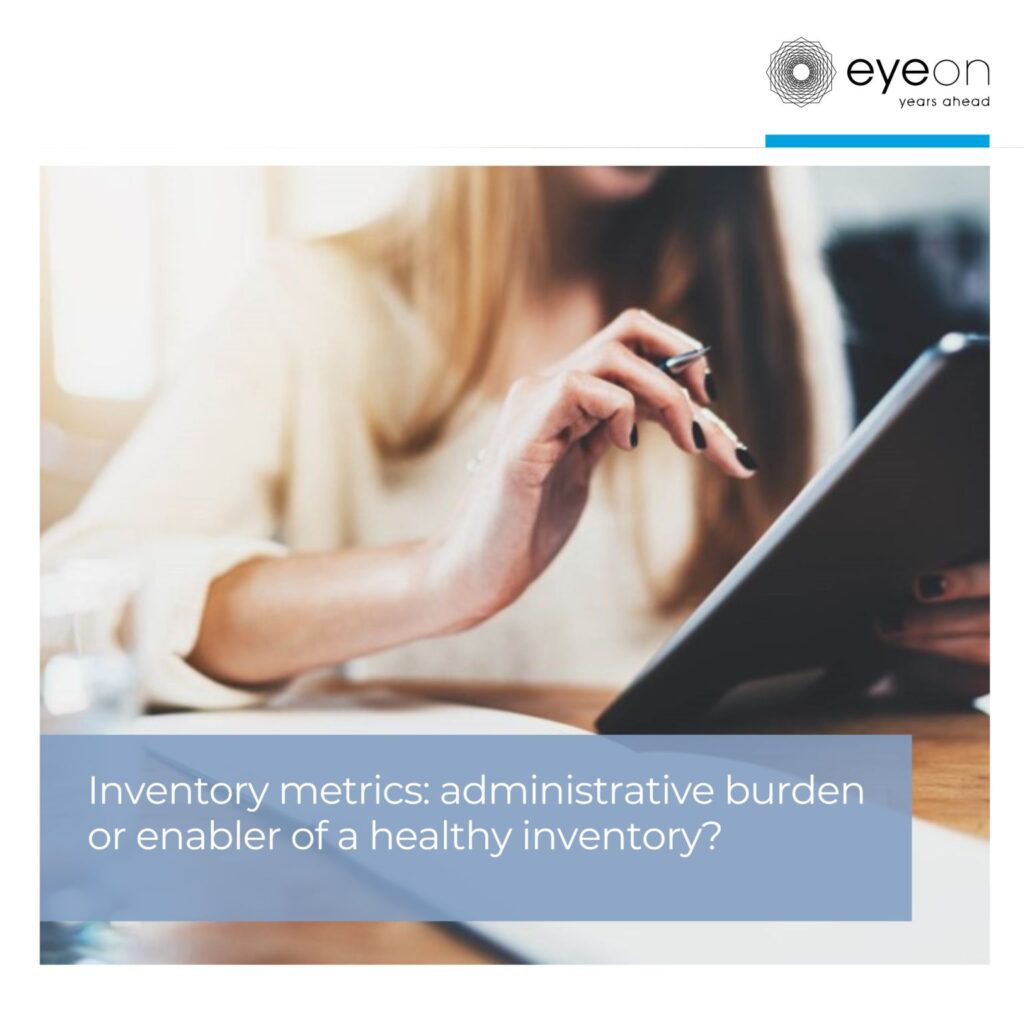Inventory metrics are indicators that help you monitor, measure, and assess your performance. 📊 They give you insights to improve and optimize your processes and enable you to spot trends and identify weaknesses. 🤝
Here are our main rules to drive your #inventoryhealth using inventory metrics:
💡 𝐑𝐔𝐋𝐄 𝟏: 𝐃𝐞𝐟𝐢𝐧𝐞 𝐚 𝐰𝐞𝐥𝐥-𝐛𝐚𝐥𝐚𝐧𝐜𝐞𝐝, 𝐥𝐢𝐦𝐢𝐭𝐞𝐝 𝐬𝐞𝐭 𝐨𝐟 (𝐊)𝐏𝐈𝐬
Restrict to a small set of metrics only and ensure that they have a top-down explanatory structure, i.e. misperformance of one metric (e.g. high stock value) can be explained by misperformance of (one of) the underlying metrics (e.g. high forecast bias).
Don’t measure the whole world, ignore metrics with little value add for the organization.
💡 𝐑𝐔𝐋𝐄 𝟐: 𝐊𝐏𝐈 𝐝𝐞𝐟𝐢𝐧𝐢𝐭𝐢𝐨𝐧 𝐢𝐬 𝐢𝐦𝐩𝐨𝐫𝐭𝐚𝐧𝐭, 𝐛𝐮𝐭 𝐬𝐭𝐚𝐫𝐭𝐢𝐧𝐠 𝐚𝐧𝐝 𝐜𝐨𝐧𝐬𝐢𝐬𝐭𝐞𝐧𝐭𝐥𝐲 𝐦𝐞𝐚𝐬𝐮𝐫𝐢𝐧𝐠 𝐢𝐬 𝐦𝐨𝐫𝐞 𝐢𝐦𝐩𝐨𝐫𝐭𝐚𝐧𝐭
Don’t overcomplicate the measurements. Accept that many metrics are hard to correctly measure and that required data is unavailable or of poor quality.
Organizations get lost in defining the right definitions and fail to guide the “change”. 😰 Make sure that the metric owners recognize and accept the trends in the numbers. As long as the trend is explaining we’re moving in the right direction or helps us to identify improvements, the metrics have done their job. 📈
Want to learn more about defining the key inventory metrics and how to build the dashboards to monitor them? Discuss your challenges with Maarten Driessen or visit our website to learn how we can help: 🔗 https://lnkd.in/e799Vq4t
#inventoryoptimization#boostinventoryhealth#inventorymetrics#supplychainoptimization
